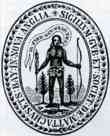
History 3010 MacKay
Week 3
Readings:
Calloway: pgs: 86-94, 126-142
Also: Cramer, "Narragansett Stalking Horse" http://www.claytoncramer.com/pequot.htm
We will consider the issue of "Middle Ground" -- Since its publication in 1991, Richard White's The Middle Ground: Indians, Empires, and Republics in the Great Lakes Region, 1650–1815, has influenced numerous studies of the interactions between Native peoples and colonizers. Combining ethnohistorical methods and cultural theory, White emphasized the complex and contingent nature of intercultural communication. In such a view, Indian peoples are active participants in their own histories, and peaceful interchange is as important as violence in understanding Indian-white relations.
See the review of Merrill's Into the American Woods: http://earlyamerica.com/review/2001_winter_spring/bkreview.html
Academic Journal topic: React to the comment: "one of the ironies of the 'discovery' of America is that it rapidly increased rather than reduced the differences between native Americans and Europeans."

Consider these Internet Sites:
Information about Thomas Morton: http://members.aol.com/srasmus/oldentext/merrymount.html
From Annenberg, information for teachers "Souls in Need of Salvation, Satan's Agents, or Brothers in Peace?" http://www.learner.org/amerpass/unit03/context_activ-2.html
From Native Languages of the Americas, information about Algonquian: http://www.geocities.com/bigorrin/famalg.htm
From American Indian.Com, a list of Algonquian nations : http://www.algonquin.tv/algonquin/default.htm
From the Powhatan Renape Nation, an American Indian Nation located at the Rankokus Indian Reservation in Westhampton Township, Burlington County, New Jersey is a critique of the Disney movie about Pocahontas : http://www.powhatan.org/pocc.htm
An excellent map of Northeast Native areas is from the Internet School Library Media Center in Virginia: http://falcon.jmu.edu/~ramseyil/vaindianspowhatan.htm
The Virtual Tour of Jamestown includes John White's images and Wahunsonacock (Powhatan)'s cloak: http://www.iath.virginia.edu/vcdh/jamestown/Powhat1.html
From Caleb Johnston's Mayflower Web Pages is a
biography of
Tisquantum (Squanto): http://members.aol.com/calebj/squanto.html
From a study guide The Pilgrims & Plymouth Colony:1620 by Duane A. Cline is a biography of Tisquantum: http://www.rootsweb.com/~mosmd/squanto.htm
As part of Plimoth on the Web is Hobbamock's (Wampanoag Indian) Homesite: http://www.plimoth.org/Museum/Hobbamock/hobbamoc.htm
The Internet site for the Narragansett Tribe is: http://www.narragansett-tribe.org/
From Barnard College seminar on Approaches to Early American Culture, 1607-1865 is information on the Peqout War, including maps and chronology: http://bc.barnard.columbia.edu/~rmccaugh/earlyAC/lecture_notes/pequotle.html
A map of the "praying towns" is part of a slide presentation on John Elliot: http://www.grad.cgu.edu/~naccarej/presentation/sld012.htm
A list of the "praying towns" from The Natick Historical Society : http://users.rcn.com/nathissoc/praying.html
From The History Place an excerpt from "King Philip's War in New England by Michael Tougias http://www.historyplace.com/specials/kingphilip.htm
Edward Randolph's Description of King Philip's War (1685). ([Edward Randolph was an emissary of King James II, sent to colonies to investigate the violations of the Crown's colonial laws (i.e., the Navigation Acts) and the overall state of the colony.): http://www.swarthmore.edu/SocSci/bdorsey1/41docs/45-ran.html